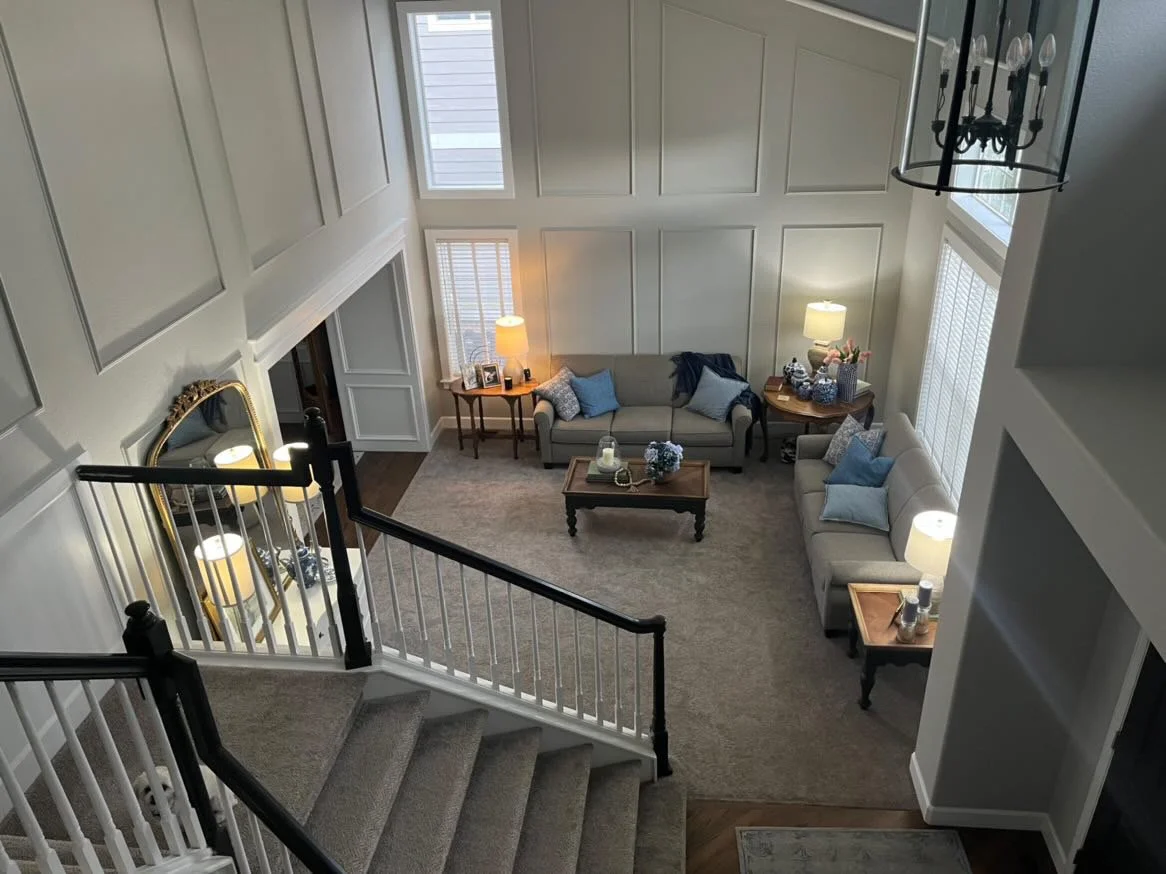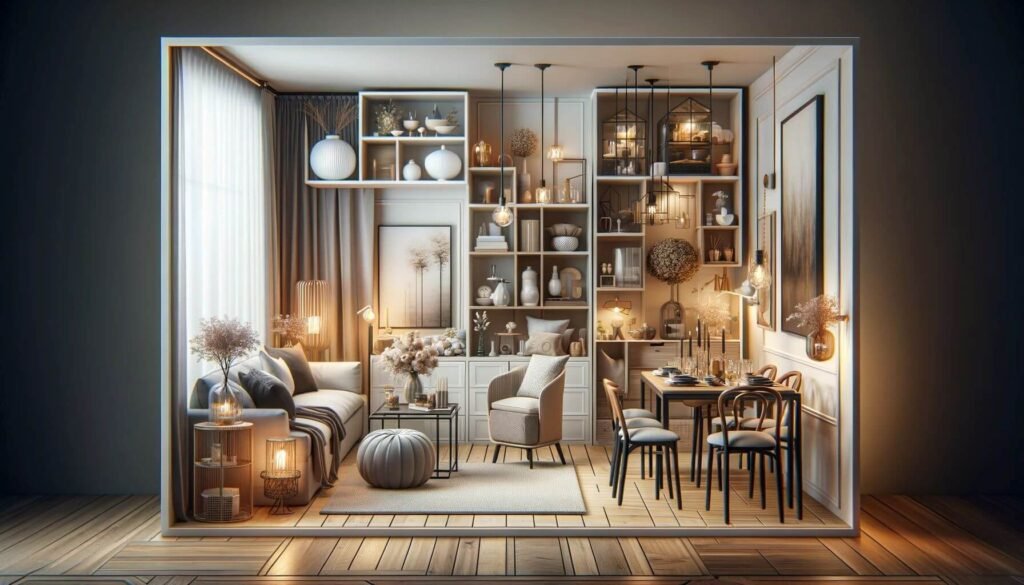As an Amazon Associate I earn from qualifying purchases.
Arranging furniture can be a daunting task. One area often overlooked is secondary furniture grouping.
Secondary furniture groupings enhance the main seating area. They offer extra seating, storage, or display spaces. These groupings add depth and functionality to a room. Understanding what items to place in these areas can elevate your home’s style. They can also create cozy and practical spaces.
Whether you have a large living room or a small apartment, secondary furniture groupings can make a difference. In this blog post, we will explore various options for these secondary areas. From practical pieces to stylish accents, discover how to optimize your space with thoughtful furniture choices. Get ready to transform your home into a more inviting and organized haven.
Introduction To Secondary Furniture Grouping
Secondary furniture grouping is an effective way to maximize space in your home. It helps create functional areas that enhance the overall look and feel of your living space. Understanding secondary furniture grouping can help you make the most of your rooms.
Purpose And Benefits
Secondary furniture grouping serves several purposes. It can create additional seating areas, reading nooks, or small workspaces. This helps in making your home more versatile and comfortable.
Here are some key benefits:
- Increased Functionality: Secondary groupings allow for dedicated spaces for different activities.
- Enhanced Aesthetics: They contribute to the overall design, adding depth and interest.
- Better Space Utilization: They make use of underutilized corners and areas.
Enhancing Space Functionality
Enhancing the functionality of your space is crucial. Secondary furniture groupings can help achieve this by providing specific areas for different needs. For example, a small table with two chairs can create a cozy breakfast nook in the kitchen.
Consider these ideas:
- Reading Nook: Place a comfortable chair with a small side table and a lamp.
- Workstation: Use a compact desk and chair in a quiet corner.
- Conversation Area: Arrange a couple of armchairs with a coffee table between them.
By thoughtfully arranging secondary furniture groupings, you can significantly improve the utility and flow of your living spaces.

Credit: www.luxdeco.com
Choosing The Right Space
Creating a secondary furniture grouping can add depth to any room. This grouping can serve as a reading nook, a conversation corner, or simply an additional seating area. The placement of this grouping is crucial to ensure it enhances the room’s functionality and aesthetics.
Identifying Potential Areas
First, look for unused or underused spaces in your room. These could be corners, near windows, or even an area adjacent to the main furniture arrangement. Consider areas that naturally invite people to sit and relax. Spaces near large windows are ideal for a secondary grouping because they offer natural light and a sense of openness.
| Area | Pros | Cons |
|---|---|---|
| Near Windows | Natural Light, Scenic Views | Potential Glare, Heat |
| Room Corners | Cozy, Private | Limited Space |
| Adjacent to Main Seating | Easy Access, Inclusive | Can Feel Crowded |
Considering Traffic Flow
Ensure the secondary grouping does not obstruct the natural flow of the room. People should move easily around the space without bumping into furniture. Think about the main pathways people use to enter and exit the room. The secondary grouping should be placed in a way that complements, rather than disrupts, these pathways.
- Identify main pathways in the room.
- Mark areas where people frequently walk.
- Ensure the furniture does not block these paths.
- Test by walking around once the grouping is set up.
Also, consider the purpose of the space. If the area is for reading, ensure good lighting. If it’s for conversation, arrange the furniture to face each other. The right space will make the secondary grouping both functional and inviting.
Types Of Secondary Furniture Groupings
Secondary furniture groupings can add functionality and charm to any room. These groupings are smaller setups away from the main seating area. They create cozy spaces for specific activities. Here, we explore two common types of secondary furniture groupings.
Reading Nooks
A reading nook is a perfect escape within your home. It usually consists of a comfy chair and a small table. A floor lamp or table lamp is essential for good lighting.
Adding a bookshelf can keep your favorite books within reach. Use soft pillows and a throw blanket for extra comfort. This setup encourages relaxation and makes reading more enjoyable.
Casual Conversation Areas
Casual conversation areas are great for small gatherings. These spaces often include two to three chairs and a small coffee table. They can be set up in a corner or near a window.
Adding a rug can define the space. Simple decor items like candles or a small plant can make the area inviting. This setup is ideal for chatting with friends or enjoying a cup of coffee.
Complementary Furniture Choices
Creating a secondary furniture grouping can add depth to your living space. It offers a cozy area for reading or chatting. Choosing the right furniture is key. Let’s explore some options.
Accent Chairs
Accent chairs can be the focal point of a secondary grouping. They provide extra seating and style. Choose chairs that match the room’s color scheme. Opt for comfortable, durable fabrics.
Consider the following types:
- Wingback Chairs
- Barrel Chairs
- Slipper Chairs
Each type has its own charm. Pick one that fits your space and needs.
Side Tables
Side tables are functional and stylish. They hold lamps, books, or drinks. Choose tables that complement your chairs and sofa. Look for these options:
- Round Tables
- Square Tables
- Nesting Tables
Side tables come in various materials. Wood, metal, or glass are popular choices. Select the one that enhances your decor.
| Table Type | Best Use |
|---|---|
| Round | Small Spaces |
| Square | Modern Looks |
| Nesting | Flexible Use |
Side tables are not just for looks. They add convenience and function to your space. Choose wisely to enhance your secondary furniture grouping.
Incorporating Multi-functional Pieces
Creating a secondary furniture grouping in your space? Think multi-functional pieces. These pieces save space and add utility. They are also stylish and practical. Let’s explore some great options.
Storage Ottomans
Storage ottomans are perfect for secondary furniture groupings. They provide extra seating. They also offer hidden storage. Great for blankets, books, or toys. They come in various styles and sizes. Perfect for any room decor. Easy to move around. They make your space versatile and organized.
Convertible Sofas
Convertible sofas add great value to any room. They serve as a sofa by day. At night, they turn into a bed. Ideal for guests or small apartments. They come in many designs. Some have extra storage underneath. This dual-purpose furniture is stylish and functional. It maximizes space and comfort. Perfect for a secondary furniture grouping.
Aesthetic Considerations
When creating a secondary furniture grouping, aesthetics play a crucial role. The visual appeal of your space can dramatically change based on the choices you make. From color to texture, every detail matters. Let’s dive into the key factors to consider.
Color Coordination
Color coordination is key for a cohesive look. Choose colors that complement the primary furniture. Neutral tones often work best. They blend easily with various styles. Use accent colors to add personality. Small items like cushions or throws work well.
Texture And Material Choices
Textures add depth to your space. Mix and match different materials for a balanced feel. Soft fabrics create a cozy environment. Hard materials like wood or metal add contrast. Combine them for a layered look.
Adding Personal Touches
Adding personal touches to a secondary furniture grouping can transform a space. It makes the area feel cozy and inviting. Personal touches reflect your personality and style. They make any room feel like home.
Artwork And Decor
Artwork and decor are key elements in any secondary furniture grouping. Hang paintings or photographs on the walls. Choose pieces that resonate with you. They can tell a story about your life or interests.
Decorative items, such as sculptures or vases, add depth to the space. Arrange them on side tables or shelves. They draw the eye and create visual interest. Mirrors are also a good choice. They make the room feel larger and brighter.
Plants And Greenery
Plants and greenery bring life into a room. They add color and freshness. Place potted plants on tables or floors. Hanging plants can add dimension to the space. Choose low-maintenance plants if you lack a green thumb.
Consider the size and light requirements of each plant. Group smaller plants together for a fuller look. Larger plants can stand alone as focal points. Plants also improve air quality and create a calming environment.
Practical Tips For Arrangement
Arranging a secondary furniture grouping can be both exciting and challenging. It’s important to strike a balance between functionality and aesthetics. This section provides practical tips to help you create a harmonious and inviting space.
Balancing Scale And Proportion
Choose furniture pieces that complement each other in size. A large sofa pairs well with a substantial coffee table. Smaller chairs fit best with a petite side table. Ensure each piece does not overpower the others.
Consider the room size. In a large room, use larger furniture to fill the space. In a smaller room, opt for smaller pieces to avoid crowding. Balance is key.
Use a mixture of heights. Combine low chairs with taller bookshelves or lamps. This creates visual interest and helps balance the space.
Ensuring Comfort And Accessibility
Place seating where it’s easy to access. Avoid placing chairs or sofas too close to walls or other furniture. Leave enough space for people to move around comfortably.
Consider the purpose of the space. If it’s for conversation, arrange seats facing each other. For reading, place a chair near good lighting.
Use rugs to define areas. A well-placed rug can create a cozy seating area. Make sure the rug is large enough to fit all the furniture legs.
Think about the pathways. Ensure there are clear paths to move around. Avoid placing furniture in high-traffic areas.
| Tip | Description |
|---|---|
| Choose Complementary Sizes | Match furniture sizes to avoid overpowering pieces. |
| Consider Room Size | Use appropriately sized furniture for the room. |
| Mix Heights | Combine different heights for visual interest. |
| Easy Access | Ensure seating is easily accessible. |
| Purpose of Space | Arrange furniture based on room’s function. |
| Define with Rugs | Use rugs to create defined seating areas. |
| Clear Pathways | Ensure clear paths for movement. |
- Choose complementary sizes: Match furniture sizes to avoid overpowering pieces.
- Consider room size: Use appropriately sized furniture for the room.
- Mix heights: Combine different heights for visual interest.
- Easy access: Ensure seating is easily accessible.
- Purpose of space: Arrange furniture based on the room’s function.
- Define with rugs: Use rugs to create defined seating areas.
- Clear pathways: Ensure clear paths for movement.
Case Studies And Examples
Understanding what might be placed in a secondary furniture grouping can transform the dynamics of a room. It can provide extra functionality, comfort, and aesthetic appeal. By examining real-life inspirations and creative configurations, you can discover unique ways to enhance your space with secondary furniture groupings.
Real-life Inspirations
Real-life examples can offer practical ideas. For instance, in a living room, a secondary furniture grouping might include a small bistro table with two chairs. This setup can create a cozy nook for coffee or reading. Placing a loveseat with a side table in a bedroom can offer a quiet spot for relaxation.
In a large hallway, a bench paired with a console table can serve as a stylish entryway. These real-life inspirations show how secondary furniture groupings can add both function and charm to different rooms.
Creative Configurations
Creative configurations can make a space more engaging. In a home office, consider placing a comfortable chair with a small bookshelf. This secondary grouping can create a mini reading corner. In a dining room, a sideboard with a couple of stools can provide extra seating and storage.
For outdoor spaces, think about a pair of rocking chairs with a small table between them. This setup can create a perfect spot for enjoying a sunny day. These examples highlight how creative configurations can enhance the usability and appeal of various areas.
| Room Type | Secondary Grouping | Function |
|---|---|---|
| Living Room | Bistro Table with Chairs | Cozy Nook |
| Bedroom | Loveseat with Side Table | Relaxation Spot |
| Hallway | Bench with Console Table | Stylish Entryway |
| Home Office | Chair with Bookshelf | Reading Corner |
| Dining Room | Sideboard with Stools | Extra Seating & Storage |
| Outdoor Space | Rocking Chairs with Table | Sunny Day Spot |
By exploring these case studies and examples, you can find inspiration for your own home. Secondary furniture groupings can add value, comfort, and style to any space.
:strip_icc()/living-room-large-area-rug-bcf9729c-14f549116b444f129b52258baf998392.jpg)
Credit: www.bhg.com

Credit: carlaaston.com
Frequently Asked Questions
What Is A Secondary Furniture Grouping?
A secondary furniture grouping is an arrangement of furniture that complements the main seating area. It adds functionality and enhances the room’s design.
How To Choose Furniture For Secondary Groupings?
Choose furniture that complements the main pieces. Consider the room’s style, space, and functionality. Balance comfort and aesthetics.
Where To Place Secondary Furniture Groupings?
Place secondary furniture groupings in corners or near windows. Ensure they don’t obstruct the main traffic flow.
Can Secondary Furniture Groupings Enhance Room Functionality?
Yes, secondary furniture groupings can enhance room functionality. They provide additional seating, workspaces, or relaxation areas.
Conclusion
Secondary furniture groupings can enhance your space beautifully. They create cozy, functional areas. Think reading corners, conversation spots, or hobby nooks. Choose pieces that complement the main furniture. Keep things balanced and inviting. Don’t overcrowd the room. Mix and match styles carefully.
Ensure everything fits well together. Secondary groupings should feel intentional. They add character and depth. Experiment with different layouts. Enjoy the process of creating unique spaces. Remember, comfort and style go hand in hand. Happy decorating!
As an Amazon Associate, I earn from qualifying purchases.


